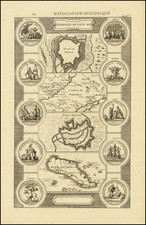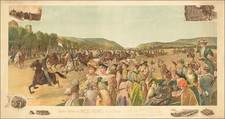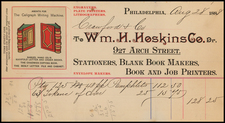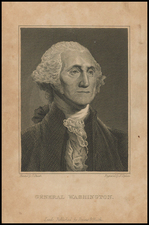One of Matthaus Seutter's magnificent allegorical figures of the 'colossal kings' from his Atlas Novus.
This fascinating print eloquently captures the ethic of the absolute monarchy that prevailed accross Europe well into the 18th-century. The scene is dominated by the strong figure of a king, adorned with his crown and scepter. Written throughout the king's person are the names of the various kingdoms of Europe, which correspond to the coasts of arms that adorn the surroundings.
Allegorically, the scene is meant to show that all of the power, and indeed the political identity, of almost all European states was vested in one man - the Absolute Monarch. While Seuttter's depiction is original in style, it follows a long line of anthropomorphic portrayals of power as invested in the body of the king. Perhaps the earliest such representation is Sebastain Munster's 'Lary Europa' (1540) (or Europe embodied by a Queen, representing the Spanish Empire). Another evocative image can be found on the frontispiece of Thomas Hobbes' Leviathan (1651), which figuratively shows the powers of all a kingdom's subjects being subsumed to form the body of a great kingly power.
Seutter published this work as one of four prints of 'colossal kings', which first appeared in his Atlas Novus (1728), with subsequent editions issued up to 1761.
Tobias Conrad Lotter (1717-1777) is one of the best-known German mapmakers of the eighteenth century. He engraved many of the maps published by Matthaus Seutter, to whose daughter Lotter was married. He took over Seutter’s business in 1756. Lotter’s son, M. A. Lotter, succeeded his father in the business.









![[ American Antiquarian Society Membership Certificate -- Charles Lucien Bonaparte, Prince of Canino and Musignano ] Olim Meminisse Juvabit](https://storage.googleapis.com/raremaps/img/small/84482.jpg)




![[The centre of this Slider is to be placed by a Thread or Pin over the centre of the respective Planisphere for any Operation]](https://storage.googleapis.com/raremaps/img/small/65557.jpg)